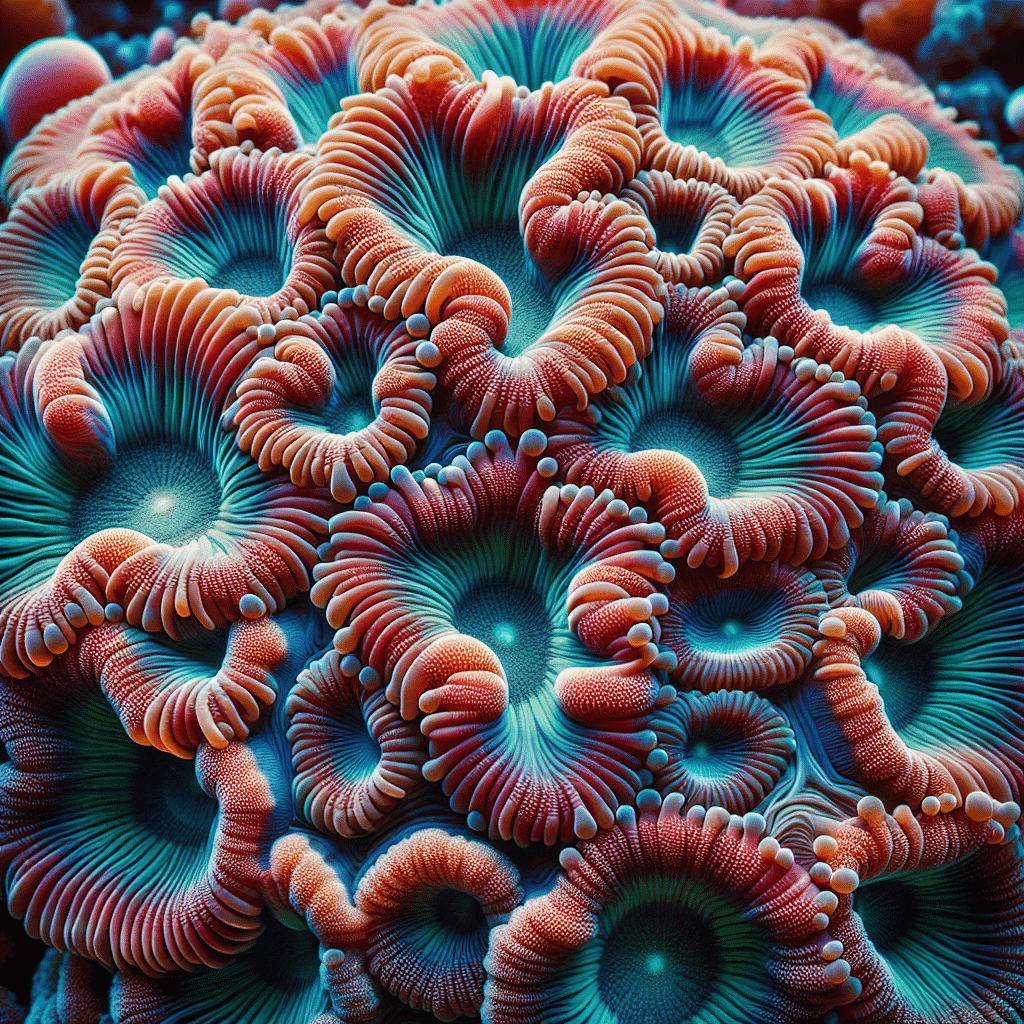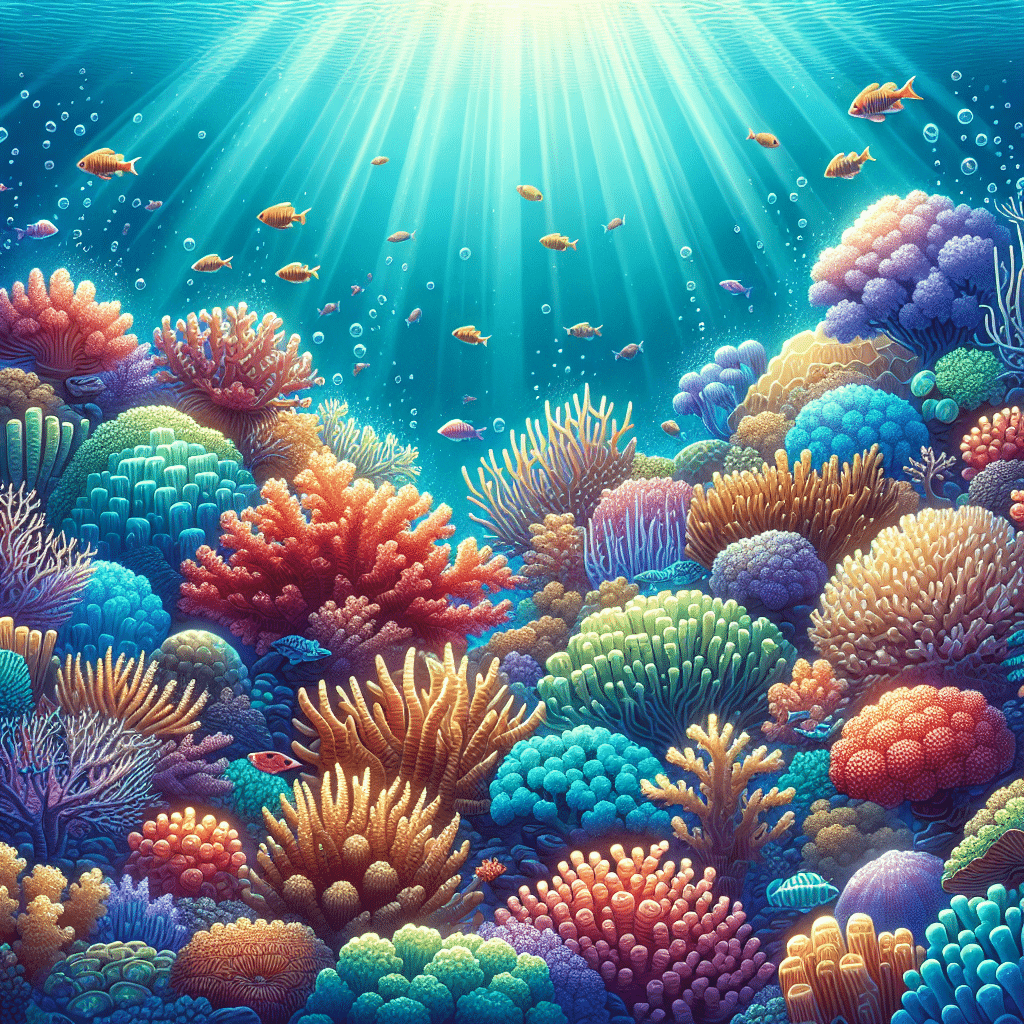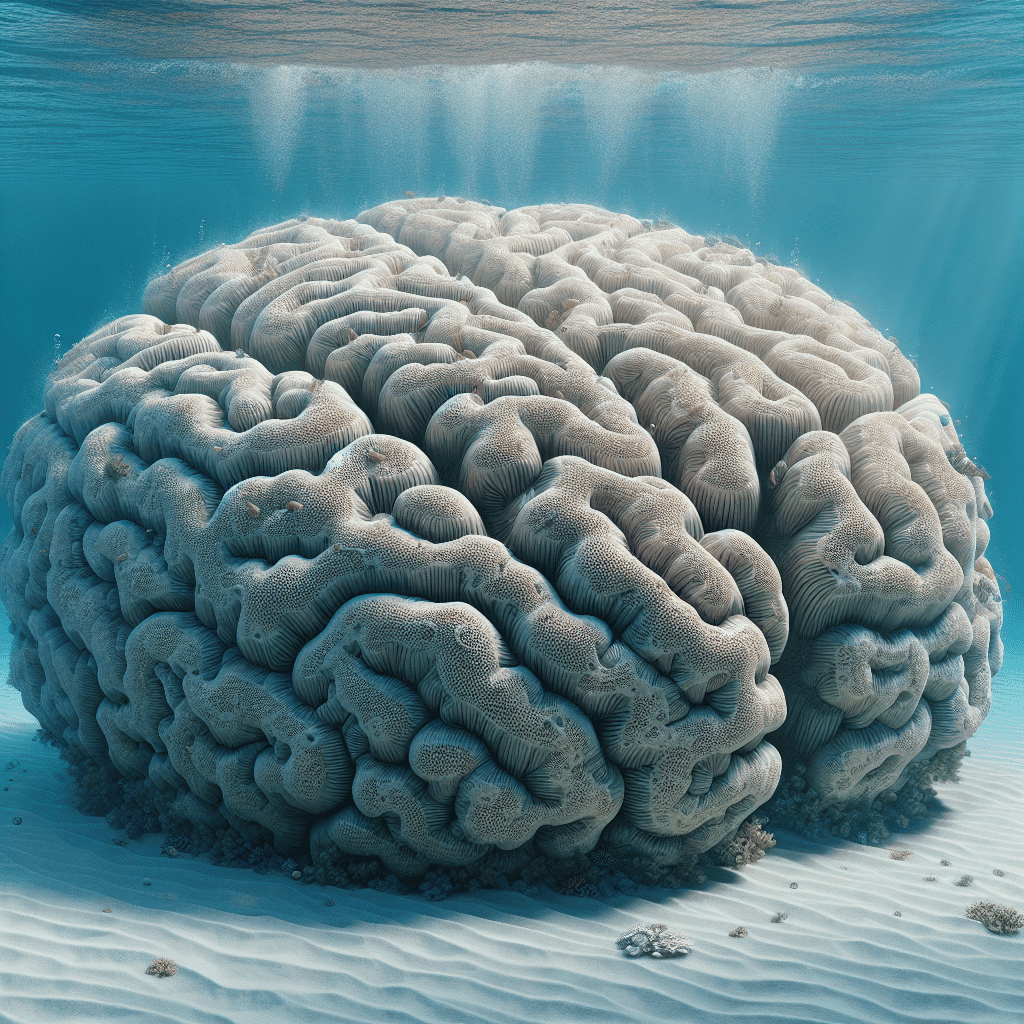Exploring Euphyllia Corals
Introduction to Euphyllia
Euphyllia corals are some of the most visually striking inhabitants of reef tanks. Known for their vibrant colors and distinct tentacles, these corals belong to the Large Stony Polyp (LPS) group. They have a hard calcified skeletal base and fleshy tentacles that are always extended, creating a mesmerizing display in my aquarium. Euphyllia includes popular varieties like Hammer corals, Frogspawn corals, and Torch corals. They thrive in shallow reef habitats across regions like Australia, Indonesia, and the Philippines, enjoying moderate water movement and bright lighting (Aquarium Keeping).
Importance of Euphyllia in Reef Tanks
Euphyllia corals play a pivotal role in the health and beauty of any reef tank. They not only add stunning visuals but also contribute significantly to the ecosystem within the tank. By providing shelter and habitat for various marine species, they enhance biodiversity. Additionally, these corals are involved in calcium carbonate production, which is essential for reef building and maintenance (TheSea.Org).
Their captivating movement and ease of care make Euphyllia a desirable choice for both beginners and experienced hobbyists. However, maintaining stable water conditions and appropriate levels of Alkalinity, Calcium, and Magnesium is crucial for their well-being. Improper handling can lead to damage and disease, so it’s important to be mindful of their needs (Aquarium Keeping).
In my experience, keeping Euphyllia corals not only beautifies the aquarium but also enriches the overall tank environment, making it a rewarding endeavor for any reef tank enthusiast. For more information on different types of corals, check out our articles on brain coral, mushroom coral, and xenia.
Euphyllia Species
Euphyllia species are fascinating corals that add color and character to any reef tank. Two of the most popular types are Torch Coral and Hammer Coral, both of which are part of the Euphyllia genus. Let’s take a closer look at each of these stunning corals.
Torch Coral (Euphyllia glabrescens)
Torch Coral, scientifically known as Euphyllia glabrescens, is a vibrant and popular choice among reef keepers, whether they are beginners or experienced aquarists. Its long, flowing tentacles create a beautiful wave-like motion in the aquarium, making it a visually striking addition.
| Feature | Description |
|---|---|
| Aggressiveness | Considered aggressive due to long sweeper tentacles |
| Ideal Environment | Prefers moderate flow and lighting |
| Feeding | Small meaty foods like brine shrimp or mysis shrimp, recommended twice a week |
| Propagation | Can be propagated easily through fragging |
Torch corals have a unique characteristic: their long sweeper tentacles can sting and bother nearby corals. However, they generally coexist peacefully with other members of their genus, such as Hammer and Frogspawn corals. To ensure they thrive, it’s important to provide them with moderate flow and lighting, allowing their tentacles to sway gently rather than being whipped around.
Hammer Coral (Euphyllia ancora)
Moving on to Hammer Coral, known scientifically as Euphyllia ancora, this species is equally popular in the reef tank community. It features thick, hammer-shaped tips on its tentacles, which gives it a distinct appearance. Hammer Coral is also known for its vibrant colors, which can range from greens to purples and pinks.
| Feature | Description |
|---|---|
| Aggressiveness | Generally less aggressive compared to Torch Coral |
| Ideal Environment | Thrives in moderate to high light and flow conditions |
| Feeding | Benefits from regular feedings in addition to its symbiotic relationship with zooxanthellae |
| Propagation | Can be propagated through fragging or splitting |
Hammer Coral is often regarded as less aggressive than Torch Coral, making it a great choice for community tanks. Like Torch Coral, it also benefits from regular feedings, which can include meaty foods or specialized coral foods. An important aspect of keeping Hammer Coral is ensuring it has enough light and flow, which helps it flourish in your reef environment.
Both Torch Coral and Hammer Coral are beautiful additions to any reef tank, and understanding their care and placement needs is essential for success. If you’re interested in learning more about other types of corals, feel free to explore articles on brain coral, mushroom coral, and frogspawn coral.
Care and Placement
Taking care of Euphyllia corals requires understanding their specific needs and how to properly place them in your reef tank. Here’s what I’ve learned about creating the ideal environment and avoiding potential conflicts with other corals.
Ideal Tank Conditions
Euphyllia corals thrive in specific tank conditions that mimic their natural habitat. Here are the key factors to consider:
| Factor | Ideal Conditions |
|---|---|
| Lighting | Moderate lighting |
| Water Flow | Low to moderate flow |
| Water Quality | Stable parameters, clean water |
Torch corals, like Euphyllia glabrescens, prefer moderate flow and lighting. Their tentacles should sway gently, as excessive movement can be harmful. They are sensitive to poor water quality, so regular testing is essential.
Additionally, Euphyllia corals require quality lighting to promote growth and vibrant coloration. Most standard lighting setups can support their needs, but it’s important to ensure they receive enough light for optimal health (Sunnyside Corals).
Avoiding Coral Aggression
When placing Euphyllia corals in the tank, it’s crucial to consider their potential for aggression. Torch corals, for example, have long sweeper tentacles that can sting and disturb nearby corals. Although they can coexist with other Euphyllia species like hammer and frogspawn corals, they may have issues when placed near different coral types (FantaSEA Aquariums).
To minimize aggression, I recommend the following:
- Space Them Out: Ensure that there is adequate distance between Euphyllia corals and other coral types to avoid stinging.
- Group Similar Species: Keeping Euphyllia corals together can lead to a more harmonious environment, as they tend to tolerate each other better.
- Observe Behavior: Regularly check for any signs of distress or aggression among your corals, and be prepared to rearrange them if necessary (Sunnyside Corals).
By paying attention to these conditions and potential conflicts, I’ve found that Euphyllia corals can thrive beautifully in my reef tank.
Feeding and Nutrition
Feeding Euphyllia Corals
Feeding Euphyllia corals, like the popular Torch Coral and Hammer Coral, is a rewarding experience for any reef tank hobbyist. While these corals have a symbiotic relationship with zooxanthellae, which provides them with nutrients through photosynthesis, offering additional food can boost their health and growth significantly. Regular feedings are recommended, especially for species like Euphyllia glabrescens. I’ve found that small, meaty foods like brine shrimp or mysis shrimp work well; feeding them about twice a week keeps them happy and thriving (FantaSEA Aquariums).
Here’s a simple feeding schedule I use:
| Day | Food Type | Frequency |
|---|---|---|
| Monday | Brine Shrimp | 1x |
| Wednesday | Mysis Shrimp | 1x |
| Saturday | Variety (frozen, pellets) | 1x |
Broadcasting feed provides a good coverage area, allowing multiple corals to get a share. It’s also beneficial to mix in some pellets, nori, or flake food, as a varied diet supports their overall health.
Symbiotic Relationship with Zooxanthellae
Euphyllia corals rely heavily on their relationship with zooxanthellae, tiny algae that live within their tissues. This relationship is fascinating because it allows the corals to gain energy through photosynthesis. The zooxanthellae utilize sunlight to create sugars, which the corals then use for growth and energy. This means that while feeding is optional, corals do thrive better when they receive additional nutrients.
The health of Euphyllia corals is also tied to stable water parameters, including calcium and alkalinity levels, which are vital for their growth and the health of the zooxanthellae. Proper water quality helps ensure that both the corals and their algal partners can flourish (Sunnyside Corals).
By understanding and nurturing this symbiotic relationship, I’ve seen my Euphyllia corals become vibrant and resilient, contributing significantly to the overall beauty of my reef tank.
Propagation and Fragging
Euphyllia corals are not only beautiful additions to a reef tank but also relatively easy to propagate. Understanding how to frag and propagate these corals can help hobbyists expand their collection or share with friends.
Fragging Techniques
Fragging Euphyllia corals, such as Torch or Hammer corals, is a straightforward process. Here’s a quick guide on how to do it:
- Gather Tools: You’ll need a band saw or bone cutters for clean cuts.
- Select a Healthy Colony: Choose a healthy Euphyllia coral to frag.
- Make the Cut: Carefully cut a branch from the main colony, ensuring that the cut is clean to prevent stress and infection.
- Place the Frag: Secure the frag in a suitable area of the tank, such as on a frag rack or in a small piece of rock.
The fragments can regrow into new colonies, allowing you to enjoy multiple Euphyllia in your reef tank.
Propagation of Euphyllia
Euphyllia corals can reproduce both sexually and asexually. In the wild, they engage in sexual reproduction by releasing eggs and sperm into the water. In an aquarium setting, however, they often reproduce asexually through a process called budding. This is where new heads can appear on the coral, gradually increasing its size and health.
Here’s a quick overview of propagation methods:
| Method | Description |
|---|---|
| Sexual Reproduction | Releases eggs and sperm into the water column. |
| Asexual Reproduction | New heads form through budding on the existing coral. |
Euphyllia corals thrive in shallow reef habitats, so maintaining ideal conditions in your reef tank will support their growth and propagation. If you’re interested in expanding your collection or learning more, check out the variety of Euphyllia species, including Torch coral and Hammer coral. Happy propagating!
Behavior and Reproduction
Reproduction Methods
Euphyllia corals are quite fascinating when it comes to reproduction. They have the ability to reproduce both sexually and asexually. In the wild, these corals release eggs and sperm into the water for sexual reproduction. This process allows for genetic diversity, which is essential for thriving coral populations. In aquariums, they often reproduce asexually through budding, which is when new polyps develop from the parent coral (Aquarium Keeping).
Euphyllia glabrescens is a unique species that acts as a brooder. It releases both sinking and floating larvae, which can lead to the formation of colonies of varying sizes, including smaller clusters and single polyps beneath larger colonies (Coral Magazine).
Anatomical Features
The anatomical structure of Euphyllia corals is quite remarkable. They possess long, flowing tentacles that are equipped with nematocysts, which serve both feeding and defense purposes. The calcareous skeleton provides a solid foundation for these corals to thrive in their environments (TheSea.Org).
Here’s a quick overview of some key anatomical features:
| Feature | Description |
|---|---|
| Tentacles | Long and flowing, used for feeding and defense |
| Nematocysts | Stinging cells that help capture prey |
| Calcareous Skeleton | Provides structural support and protection |
Euphyllia corals are also photosynthetic, which means they can produce their own food to some extent, although feeding them with a variety of frozen foods, pellets, and flakes can enhance their growth. Maintaining stable water parameters, such as calcium and alkalinity, is essential for their health (Sunnyside Corals).
Understanding these aspects of Euphyllia corals can help me provide better care and create a thriving environment in my reef tank.
Challenges and Diseases
Caring for Euphyllia corals can be a rewarding experience, but it does come with its own set of challenges. As I’ve learned from my experiences and research, a few common issues can arise when keeping these beautiful corals in a reef tank.
Common Challenges in Euphyllia Care
One of the main challenges in Euphyllia care is maintaining stable water conditions. These corals thrive in low to moderate water flow and require specific levels of alkalinity, calcium, and magnesium to flourish. Poor water quality can lead to stress, making them more susceptible to diseases. The key challenges include:
- Brown Jelly Disease: This is a serious condition that can affect Euphyllia corals, often resulting from stress or overcrowding.
- Overcrowding: Euphyllia corals have long sweeping tentacles that can sting neighboring corals, so it’s crucial to provide ample space.
- Water Quality: Fluctuations in water parameters can lead to distress in Euphyllia corals, so consistent monitoring is vital.
| Challenge | Description |
|---|---|
| Brown Jelly Disease | A serious infection often caused by stress or overcrowding. |
| Overcrowding | Insufficient space can lead to stinging and damage. |
| Poor Water Quality | Fluctuations can cause stress and health issues. |
For successful Euphyllia care, I recommend providing consistent water conditions, monitoring for signs of distress, and ensuring adequate spacing between corals.
Disease Prevention and Treatment
Preventing diseases in Euphyllia corals requires a proactive approach. Here are some strategies that I’ve found effective in mitigating risks:
Maintain Water Quality: Regularly test for alkalinity, calcium, magnesium, and other parameters. Keeping these levels stable is essential for coral health.
Proper Placement: Be mindful of the placement of Euphyllia corals to avoid aggression from other species. They typically do well next to similar Euphyllia types but can be harmful to other corals if too close.
Feeding: Providing a balanced diet can help boost their immune system. I like to supplement with a variety of feeding options tailored for LPS corals.
Observation: Regularly check for signs of distress, such as retraction of polyps or discoloration. Early detection is key in managing potential health issues.
Quarantine New Additions: Always quarantine new corals before introducing them to your main tank to prevent the spread of diseases.
With these preventative measures in place, I’ve been able to enjoy my Euphyllia corals without major issues. Keeping an eye on their health and environment can go a long way in ensuring they thrive in my reef tank.
Habitat and Environment
Natural Habitat of Euphyllia
Euphyllia corals, including species like Euphyllia glabrescens, thrive in various reef environments. They are often found on reef slopes, reef crests, and reef flats. These corals prefer sheltered, turbid areas but can also dominate exposed reefs. Their adaptability allows them to inhabit different habitats, making them a resilient choice for reef tanks.
The ‘Dragon Soul’ Gold Torch Coral, for example, typically resides in very specific habitats such as southern Indonesian reefs where high tidal currents are a constant factor. They often exist in waters ranging from 15 to 22 meters (about 35 to 66 feet) deep. This depth provides them with the right conditions for growth and reproduction.
Environmental Preferences
Euphyllia corals have specific environmental preferences that need to be considered for successful care in a reef tank. These preferences include water flow, light intensity, and water quality. Here’s a quick summary of optimal conditions:
| Environmental Factor | Preference |
|---|---|
| Light | Moderate to high light |
| Water Flow | Moderate to high flow |
| Temperature | 75°F to 80°F (24°C to 27°C) |
| pH Level | 8.1 to 8.4 |
| Salinity | 1.023 to 1.025 specific gravity |
Euphyllia primarily relies on its symbiotic relationship with zooxanthellae for nutrition but can also capture small planktonic organisms and detritus from the water column. This flexibility in feeding makes them an excellent choice for various tank setups.
When setting up a habitat for Euphyllia, ensure that the water conditions mimic their natural environment as closely as possible. Maintaining the right balance will help keep these corals healthy and thriving in your reef tank. For more insights on different coral species, check out articles on brain coral, frogspawn coral, and hammer coral.
Conservation and Threats
Threats to Euphyllia in the Wild
Euphyllia corals, including species like the ‘Dragon Soul’ Gold Torch Coral (Euphyllia glabrescens), face several significant threats in their natural habitats. One of the most pressing issues is coral bleaching, which is often caused by rising sea temperatures and environmental stressors. Bleaching occurs when corals expel the zooxanthellae algae living in their tissues, leading to a loss of color and essential nutrients, ultimately jeopardizing their survival.
Additionally, overcollection for the aquarium trade poses a considerable risk. The demand for unique and colorful corals has led to unsustainable harvesting practices, which can further deplete wild populations. The habitats of Euphyllia corals, such as sheltered turbid reefs and exposed reef areas, are also threatened by pollution and destructive fishing practices, which disrupt the delicate balance of these ecosystems Coral Magazine.
Conservation Efforts for Euphyllia
To combat these threats, various conservation efforts are underway aimed at preserving Euphyllia corals and their habitats. One approach involves establishing marine protected areas (MPAs) where fishing and collection activities are restricted or banned. These protected zones allow coral populations to recover and support the overall health of reef ecosystems.
Additionally, organizations and researchers are focusing on sustainable aquaculture practices. By cultivating Euphyllia corals in controlled environments, they can reduce the pressure on wild populations and ensure that hobbyists have access to healthy corals without harming natural reefs.
Education and awareness campaigns are also crucial in promoting responsible practices among aquarium hobbyists. By informing people about the importance of coral conservation and encouraging the purchase of sustainably sourced corals, we can contribute to the protection of these beautiful organisms.
For those interested in keeping Euphyllia corals in their reef tanks, it’s essential to prioritize the health of these species and support conservation initiatives. Every effort counts in preserving the beauty and diversity of our oceans. If you’re looking for more information on coral types, you can explore other species like torch coral or hammer coral in your aquarium setup.



